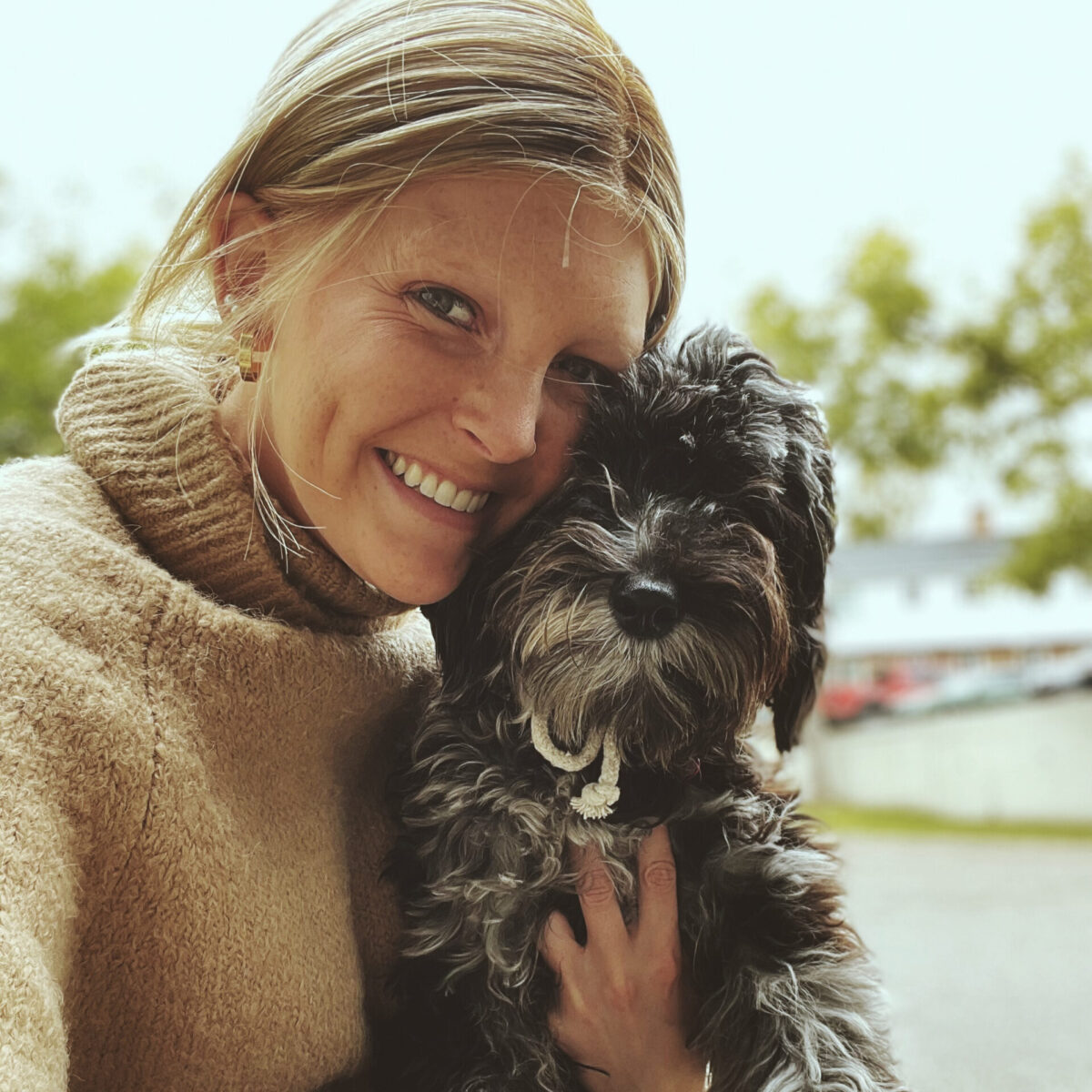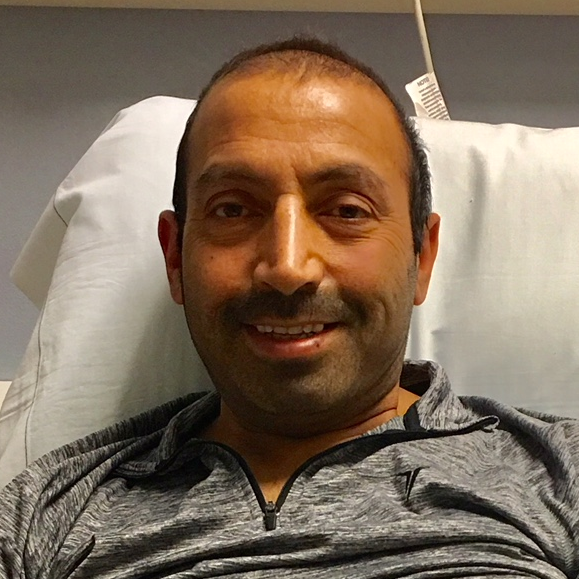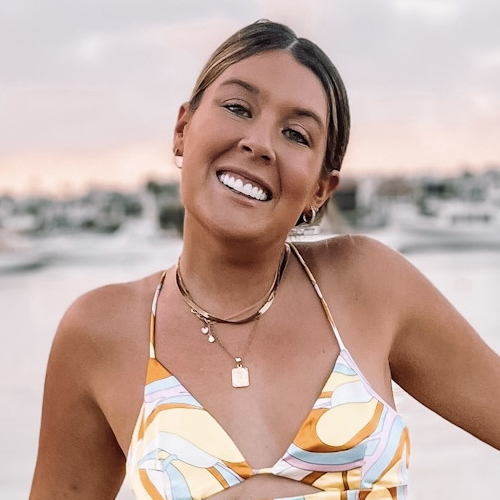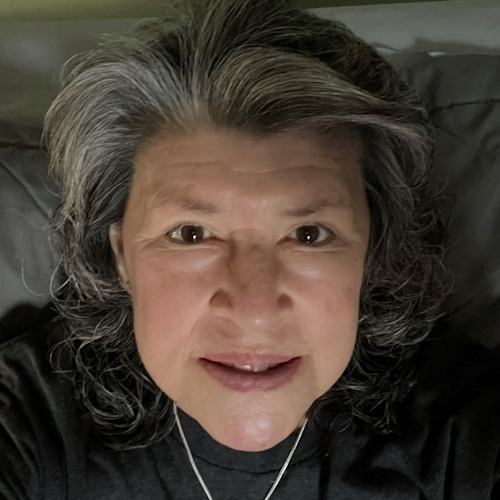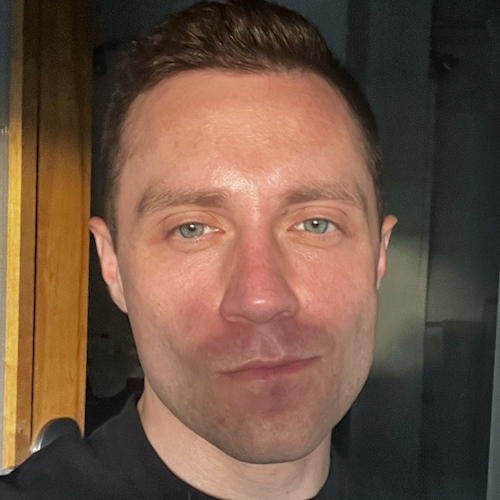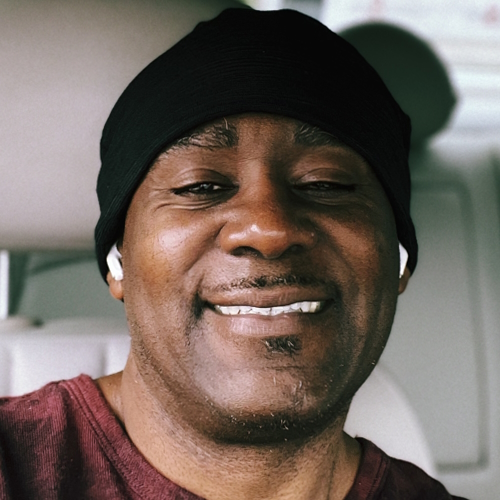Nina’s Stage 4 DLBCL Non-Hodgkin’s Lymphoma Story
Nina shares her non-Hodgkin’s lymphoma story, getting diagnosed with stage 4 diffuse large B-cell (DLBCL) and undergoing chemotherapy.
She takes us through her journey: the fear of navigating it alone, the “scanxiety,” the physical and mental side effects, and survivorship.
You can read her in-depth story below and watch our conversation on video. Thank you for sharing your story with us, Nina!
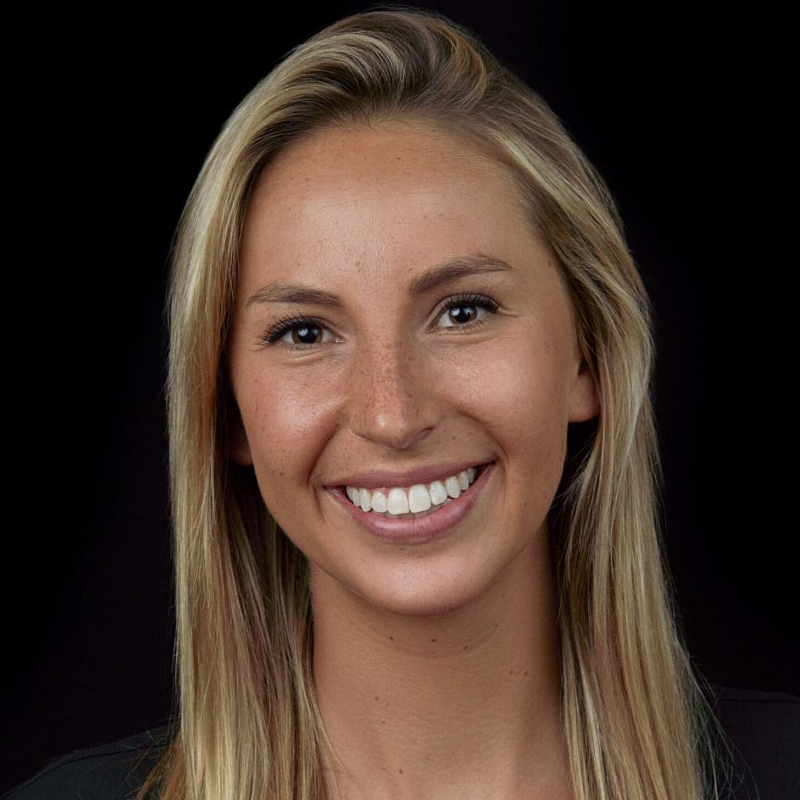
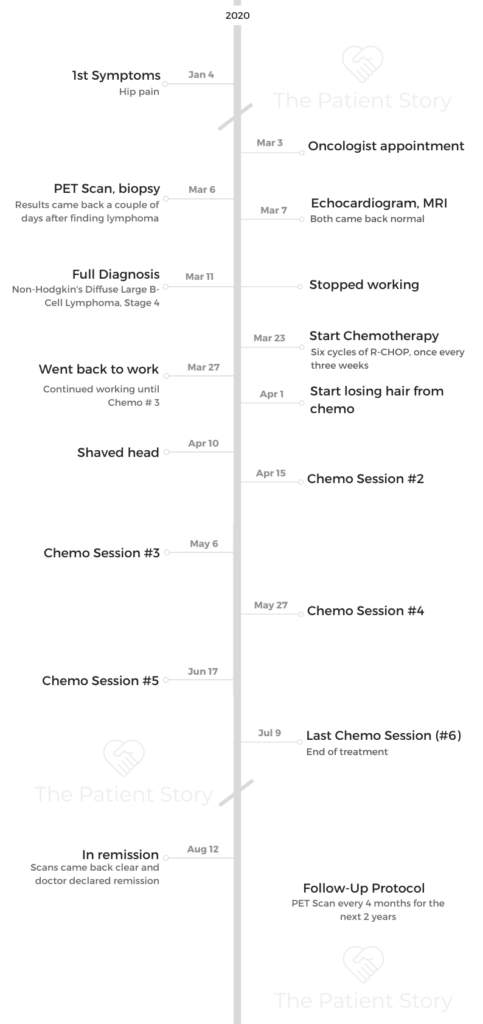
- Name: Nina L.
- Diagnosis (DX)
- Non-Hodgkin’s Lymphoma
- Subtype: Diffuse large B-cell (DLBCL)
- Stage 4
- Age at DX: 25 years old
- 1st Symptoms
- Hip pain and lower extremities pain
- Night sweats
- Treatment
- R-CHOP chemotherapy
This interview has been edited for clarity. This is not medical advice. Please consult with your healthcare provider for treatment decisions.
Nina’s Story on Video
Getting Diagnosed
Dealing with Chemo, Hair Loss & Other Side Effects
Survivorship and Cancer Community
First Symptoms
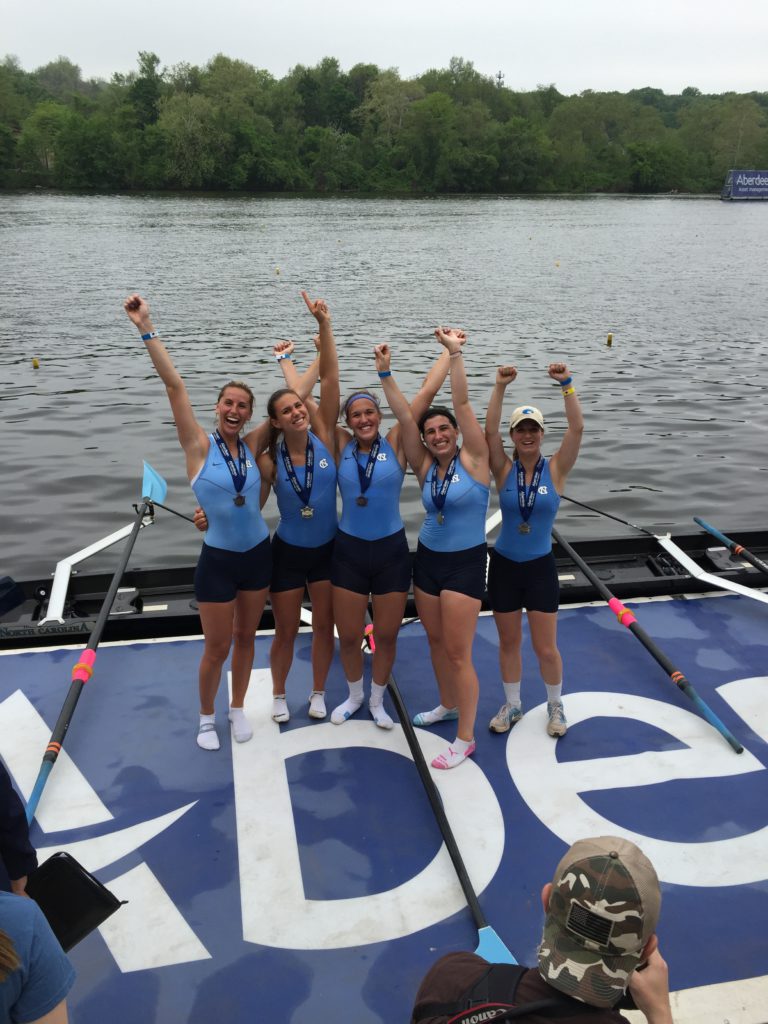
Tell us about yourself outside of the cancer story
I grew up outside of Philadelphia. I was on the women’s rowing team and then went to college at the University of North Carolina, where I was on the Division 1 women’s rowing team. I studied advertising and entrepreneurship.
I then transitioned to New York City. That is where I started a nonprofit called Women in Sports Tech and got into the sports tech landscape myself through my first full-time job.
How does it feel looking at that old picture?
Both good and bad, I’ll be honest. Rowing is a not-so-glorified sport. It looks beautiful, but it is grueling. There’s a lot of heartbreak when trying to work through the schedule and being a student-athlete.
I had a lot of success, but I actually had to medically retire my junior year because of a hip injury. I did have my senior year at an experienced college and a more normal format.
I took more lessons from my rowing career and what I had to endure then every single step of my way during treatment.
How did you know something was wrong?
I didn’t know anything was wrong until January 2020, when I was doing a Pilates course. As a student-athlete, I know how to really work myself, and I was doing the most simple exercise. I tweaked my hip, but nothing was alarming. It grew from my hip down to my legs and calves, and it was just excruciating pain.
I went to a physical therapist 3 times a week, and each time it became worse. It went from lower extremities into upper extremities.
It felt as if I was sore in every cell of my body. It wasn’t until it manifested into my chest that I became more alarmed that this could be something more serious.
Going to get answers
I called my dad and said, “Dad, I have chest pain. I’ve had 2 occasions of night sweats that were severe, and I don’t feel well.”
He said, “This is not a negotiable argument. Get into an Uber, and you’re going to the ER now.” This was March 2020, and COVID was rampant. Was our concern cancer? Absolutely not. Was our concern COVID? Yes.
I went to the ER that evening. I got a CT scan and blood work. I was there by myself. Not a single friend or family member was there.
If I could pinpoint the hardest night of my life, that night would be it because I knew something was so wrong, and I had no one and no answers to help me figure it out.
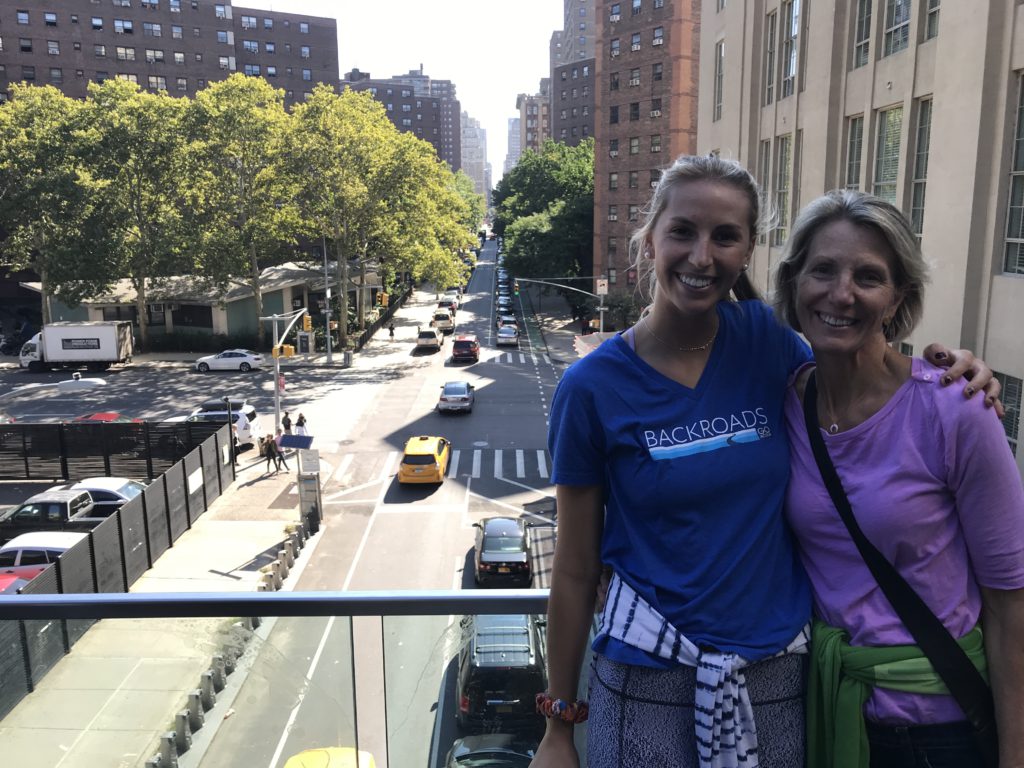
Dealing with the wait for test results
I’m not a big crier, but I cried from 8:00 p.m. until 4:00 a.m. nonstop. The ER nurses had so many things on their plate with COVID happening. I was the least of their concerns. The CT scan and the blood work came back normal.
My dad, who is in oncology, works for a company called Seattle Genetics, which sells a drug for classic Hodgkin’s lymphoma. He had the wherewithal to say, “Things are not adding up. I am scheduling you for a biopsy the next morning, but I want you to be in Pennsylvania for this.” I got my biopsy the next morning.
»MORE: Read more patient experiences with first symptoms of lymphoma
Getting Diagnosed
Describe the biopsy
For the first one, they took it from my back left pelvic region, where they saw some slight discoloration in my bone marrow. But no one was concerned. The actual ER doctors did not recommend I get a biopsy. It was my dad’s advocacy that made me get it.
The biopsy went smoothly because I was under during that time. The following biopsy that I had to get I was not, and that was excruciating.
How long did it take to get the results?
The doctors said, “We are not concerned that this is anything. We got it because your dad asked for it. Go back to New York and continue working.”
For the next couple of days, I went back to New York. I was walking to and from work. I was taking the subway. At that moment, no one was wearing masks either. COVID was everywhere, and yet I was there not knowing I was as immunocompromised as I possibly could have been.
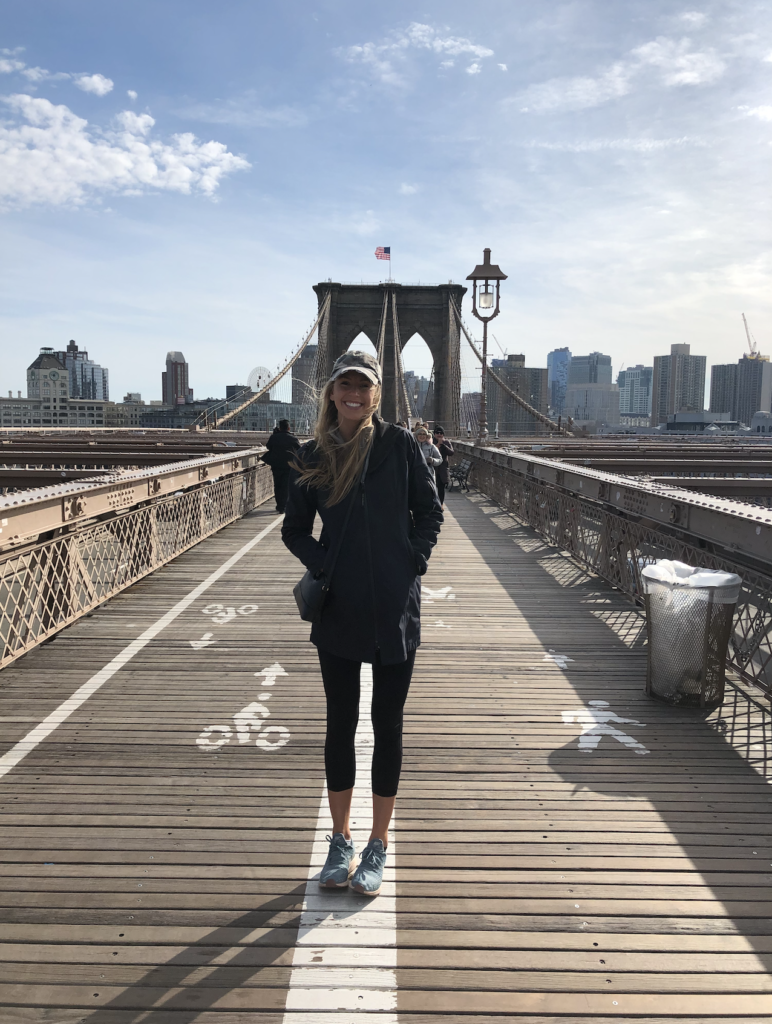
The oncologist’s call
I will never, ever forget that moment. I saw an unknown number come up on my phone, and I remembered, “Oh, I’m getting my call.” I remember answering it and hearing the hello. I knew then something was wrong.
I had to patch in my parents on the other side. The doctor said to me, “We have found that your biopsy shows you have lymphoma, a form of cancer.”
I put myself on mute. I sank to the floor, and I screamed. I have no idea what was said after that moment. I completely blacked out from any conversations.
The hardest part about that moment was hearing the despair from my parents — predominantly my mom, who lost all control — and to be so thrown off and set up that this could not be the case, then hearing otherwise.
Did you process what that meant at that moment?
The word “cancer” has so much behind it, and I processed it to the point of like, “How? They had to have it wrong. That couldn’t have been me.”
By processing, I was denying it, and I had to make a few important phone calls. I had to process it to verbalize what happened, but if I were asked to recall what I said and how I said it, I would have no idea.
»MORE: Patients share how they processed a cancer diagnosis
Breaking the news of cancer to people
I am a big people pleaser. I took it as my responsibility to individually call every single person in my life who I had touched even remotely to share the news on a very personal level. To say I had individual conversations with 200 people would not be an overestimate.
By personal conversations, I would get on the phone. I would explain to them my situation, and I would have to re-comfort them to ensure that I was going to be okay.
I was the mother to every conversation I have.
That is not something I recommend doing, but it allowed me a community of people who from that initial conversation had my back every single step of the way.
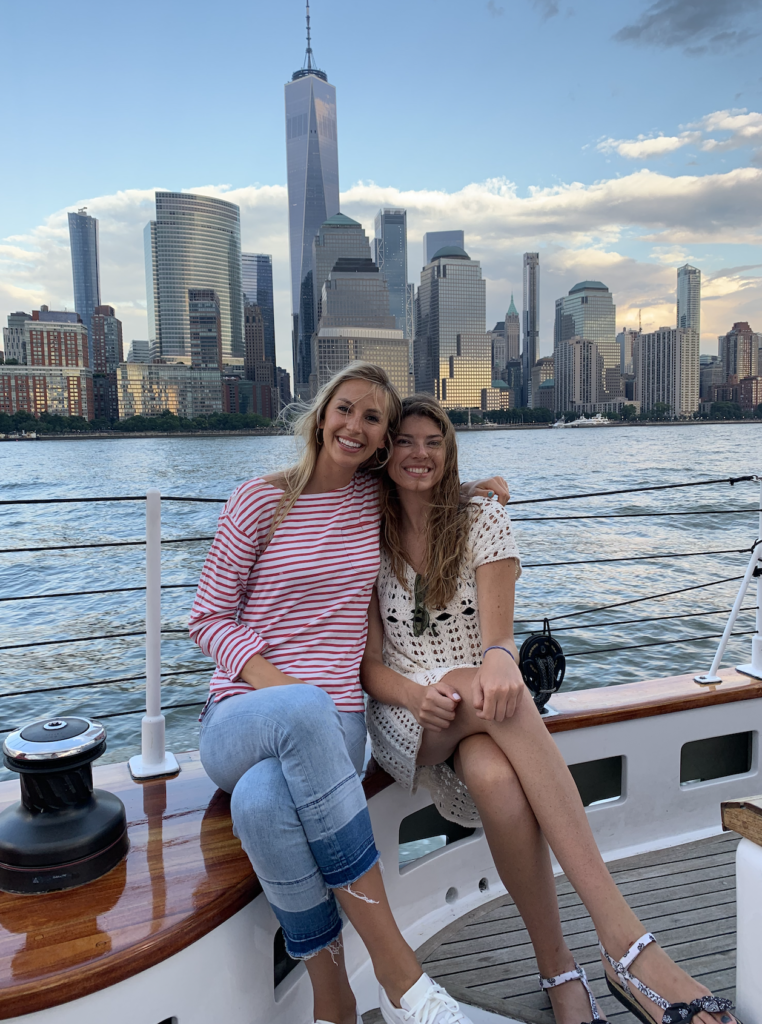
Treatment Decisions
Staging and deciding the course of treatment
The PET scan showed I was stage 4, but they did not know specifically what double markers I had, which then determined the line of treatment.
I would have either gotten R-CHOP or R-EPOCH, which is a bit more intense type of chemotherapy. The second biopsy had to go forth to enable us to make that decision.
I was not prepared for the biopsy. They just numb the area. The doctor had to try 4 different times to actually extricate the bone marrow, which was the most painful process. This was the day that I found out I was stage 4 diffuse large B-cell and that I was starting chemo.
I also learned that I would not be able to freeze my eggs. It was the second-worst day.
What helped digest the news?
The best advice I can get or give is that it doesn’t take a long time. Getting over that moment is the most important part of the journey because it will determine so many things.
Yes, it’s grueling, but if you can handle those first 10 to 15 minutes, it is all okay after.
It’s just a matter of taking it step-by-step and knowing that this will help you in the long run.
Getting another opinion
My dad being in oncology was an incredible resource.
We were able to get many opinions around the course of treatment, what is best for me in terms of how I’m going about this process, and making sure every T is crossed and I is dotted. We did have multiple people look over my PET scan and form of treatment.
Determining the next steps
According to my biopsy, I didn’t have a double marker, so R-CHOP was definitely the first 3 chemotherapy treatments I would have. After those, if I weren’t showing any improvement, I would then move on into R-EPOCH.
For the first starting factor, this was the frontline form of treatment. I didn’t have much of a say on that, given it is less intensive in terms of the amount and length of chemotherapy infusion. I wanted to start there instead of doing something more intensive.
We had an MRI done on my brain and an echocardiogram. They did not find any lymphoma in my brain, which would warrant me to go through the R-EPOCH route.
Everything was set to go in terms of my heart condition. Since I don’t have a heart condition, I could move forward with treatment 5 days later without any issues.
Chemotherapy
Cutting the hair ahead of the treatment
I had long blonde hair, and I knew that I would lose my hair. Like any female, it’s a form of identity. I took control by cutting off about half of it so that I knew after my first treatment, as it began to fall out, it wouldn’t be as alarming.
It’s still just as alarming, but it was less hair to pick up after. I also got to find a new version of my hair, which was fun to experience. I never really experimented with shorter hair.
Deciding on IV vs Port
My oncologist recommended I not get a port because R-CHOP is typically one day of infusion every 3 weeks. I was not receiving a more regular infusion like R-EPOCH, so they recommended just doing it intravenously (IV).
I had many problems with the IV. My veins would blow out every time, or I would have some allergic reaction, either itching or burning. I would go through both arms, having about 3 or 4 different IV locations each time, and by treatment 6, I had 6 in total. They could barely find one vein that was able to be used.
Now, it’s still a big problem because the veins fall beneath their surface. It did really impact me. There are complications with both (IV and port), but that is what we chose to do.
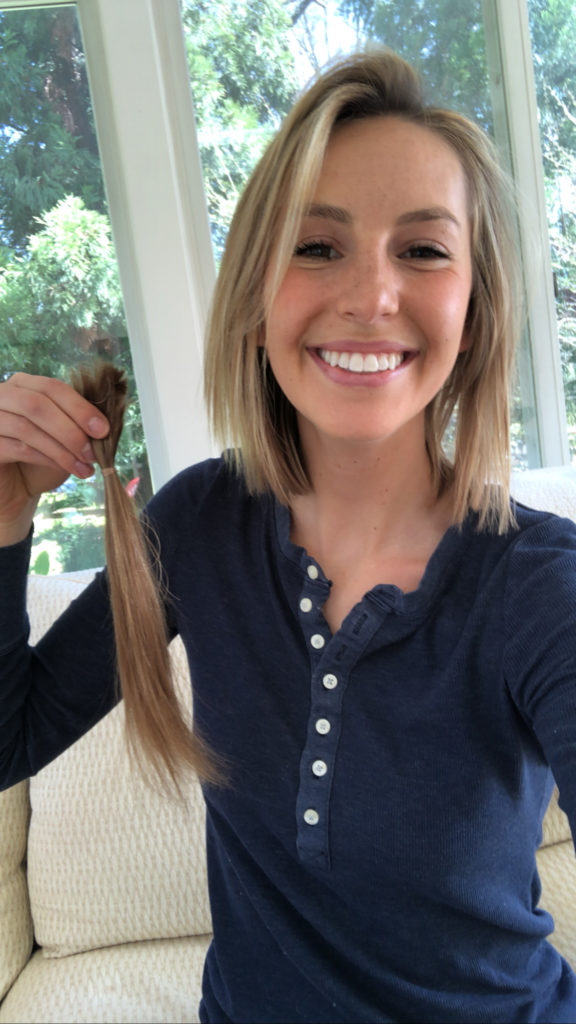
Describe the chemotherapy regimen
I was still working at that time. After I was diagnosed, I did take a couple of weeks to digest the information. I would then go back to work during treatment 1, 2 and 3. I chose to have my infusion on a Thursday to take off work Thursday and Friday and to have Saturday and Sunday to recover.
The day typically was: arrive at 8:00 a.m. and get my labs done to ensure that all of my counts were normal for me to receive the chemo. I would then go to my chair. It was usually a beige lounge chair. Me and just a line of other people.
As an adolescent/young adult, I was the only young person in the (chemo) room. That wasn’t easy to see.
»MORE: Patients talk about working during cancer treatment
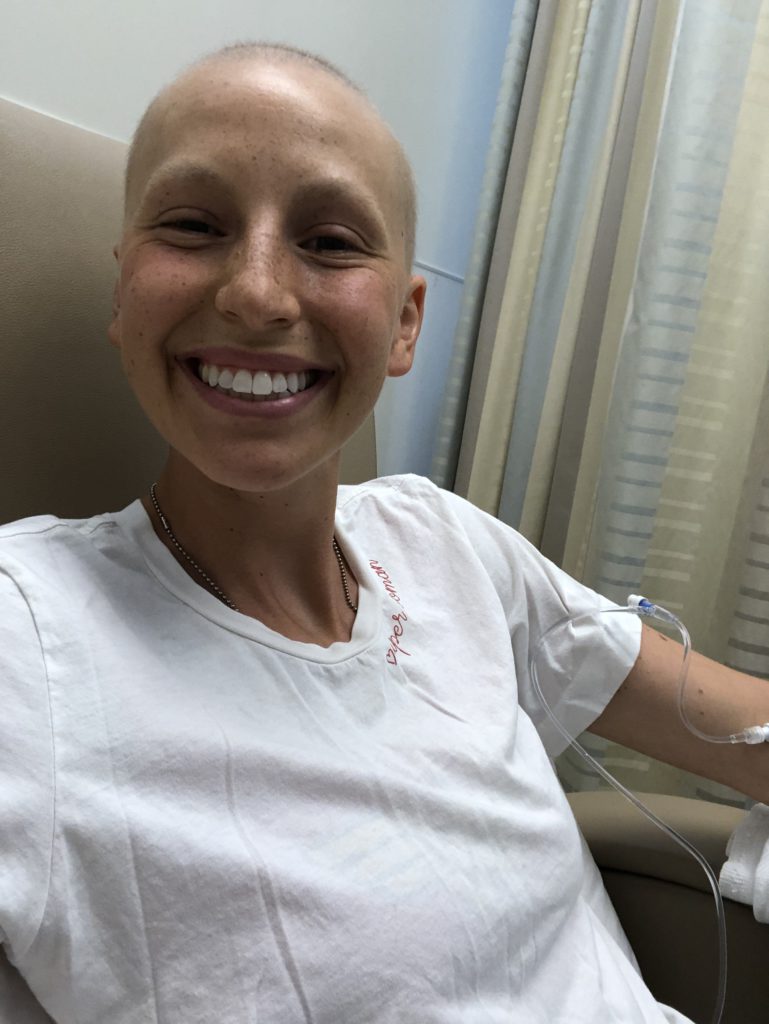
I would get my pre-medications, which typically were Benadryl, Advil and some anti-nausea medication. Then I would start each line of R-CHOP separately.
Every single part took about 45 minutes to 2 hours, depending on the volume of liquid. Each of them has its own complications. The oncology nurses were always by my side. Because of COVID, I had no one else allowed in my chemo infusion room. It was just the nurses and me for about 8 hours each day.
I couldn’t read. I couldn’t watch TV. I could eat little things here and there, but I was just a zombie. The Benadryl they give makes you so sleepy. I didn’t do much.
Not having anyone there was, yes, tough, but it also meant, as a people pleaser, I didn’t have to entertain anyone and make them feel more comfortable. I could handle and prioritize myself, which really made a massive impact.
The part of getting the infusion and not having people was totally doable. But not having family members during pivotal decision-making processes was not ideal. I would have to call them in and get feedback via phone first instead of having them sitting there in real-time, making decisions.
Chemotherapy Side Effects
Describe the side effects
About a week after my first treatment, I started to feel pain. I’ve let my hair naturally fall out for about a week and a half before I decided to take control and shape it. I did see the hair falling out in large clumps. I would refrain from brushing to not see how much has come off.
Getting through the side effects
The biggest and most known is nausea. After my first infusion and into my last, I would have about 72 hours of extreme nausea. This was day-consuming nausea. I would wake up with it, only able to eat a few things, but it did go away. Some people are not as fortunate to have that nausea go away naturally. I was able to get back into full appetite and energy by about week 2 after each infusion.
What helped me the most with my nausea was having some exercise. That seems counterintuitive, but it stimulates the appetite, gets you out in fresh air and gives some movement for the body.
Then there were a lot of liquid calories. I got into smoothies, green juices and protein powders that were vegan and synthetic-free. This is how I was able to maintain my weight, which if I had dipped any lower, I probably wouldn’t have been able to receive chemo, which would then extremely hurt my chances of survival.
The second was lack of energy, and that is very difficult. I used sleep as my weapon of choice and was not ashamed of it, but incorporating movement and good nutrition every day allowed me to really kick that energy into high gear. I did not have neuropathy. I did not experience any numbness in my fingers and toes.
And then hair loss.
I also had to take Lupron, an injection that puts your body into a state of menopause to help your ovaries not shed each month so that I could protect some of the eggs, given that I wasn’t able to freeze. This made me have the worst hot flashes and mood swings. That, on top of just feeling shitty already, was not ideal, but I was able to manage those to the best of my ability.
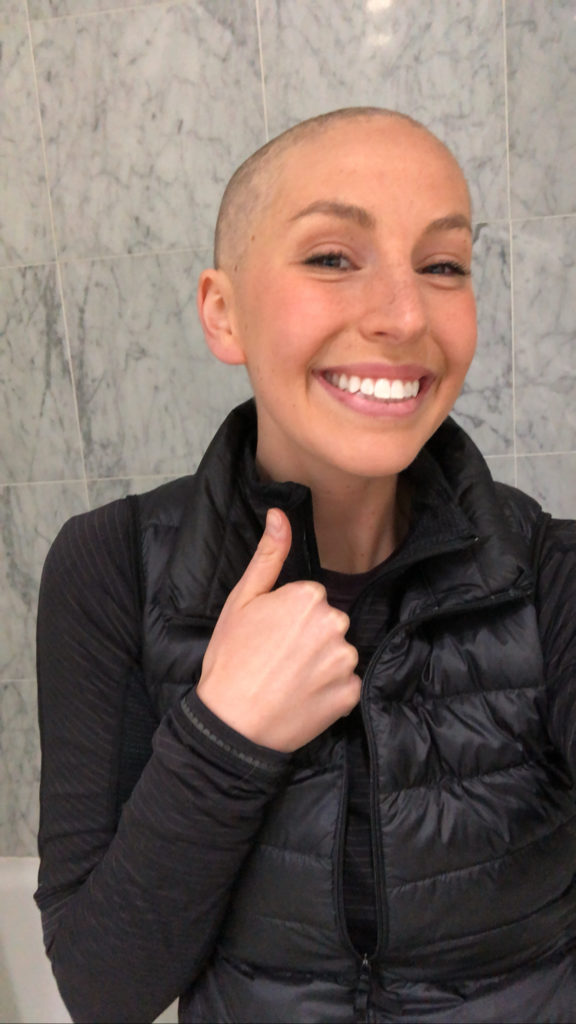
Biggest side effect not many talk about
People can talk about the physical side effects all day long, but it really takes your mental health to be as strong as possible during this time. It is something that is lacking in oncology and our entire world.
It is extremely important for every patient to highlight the importance of mental health during this time.
»MORE: Mental and emotional support when leaving the hospital
Getting greens to help with side effects
I met with a nutritionist who said, “The only thing you need to focus on is eating food. I don’t really care what you eat; just eat it.”
But I took a different approach. I took sugar and heavily processed carbs and flours out of my diet. It is universally known that these types of foods are not wonderful, especially for inflammation and cancer. My main goal during this process was to consume whole, natural, organic foods that made me feel full and energized.
This was my own undertaking, but it was something my entire family got behind and supported me with, which allowed me to succeed and stick with it during the course of my treatment.
I counteracted some of the negative stories I told myself through meditation. I had been practicing before I was diagnosed, and I made it a daily ritual to have a 15- to 20-minute meditation, just sitting in my thoughts. Again, it seems counterintuitive, but it ended up being a massive way for me to befriend some of the scariest things that came up.
Meditation helped me tell the stories that I want to manifest — that it wasn’t true and that I would get through this.
»MORE: Read other patient experiences on yoga and meditation

Sharing is empowering
I took a lot of videos of me just talking about my experience and how it felt, showing the hair and being really vulnerable about the experience. It allowed me a space to share the honest truth and have people see what’s aside from that. For a lot of females, they either don’t discuss it because it’s hard or they’re afraid or ashamed of it, and this allowed me that safe space.
What allowed me to get through that was the love and validation from hundreds, if not thousands, of people saying I was glowing with or without hair. That type of inspiration from others allowed me to cultivate that inspiration for myself.
It made me feel invincible. Losing the “beauty” and the exterior part of a female’s beauty is extremely difficult. That identity is taken from you. You begin to rely on people to help validate internally, not just externally, that you are loved and worthy, despite losing hair and that feminine aspect.
The ocean is my lotion of healing. Sunshine and water and just being in nature are 3 of the most powerful forces. My mental health and my physical health were better when I put myself in environments that made me feel energized and healthy.
End of Treatment
Last day of chemo
That day was very emotional. I was by myself again for treatment number 6, and I was so proud of myself. I was so proud of what I had just endured and what my body just did. Usually there’s a big bell that you ring, and they didn’t have it because of COVID, so my parents brought little shakers to celebrate my last day.
I just felt like I had that power and strength, given the amount of support that my family and friends provided me. I really was feeling every power of hope in me.
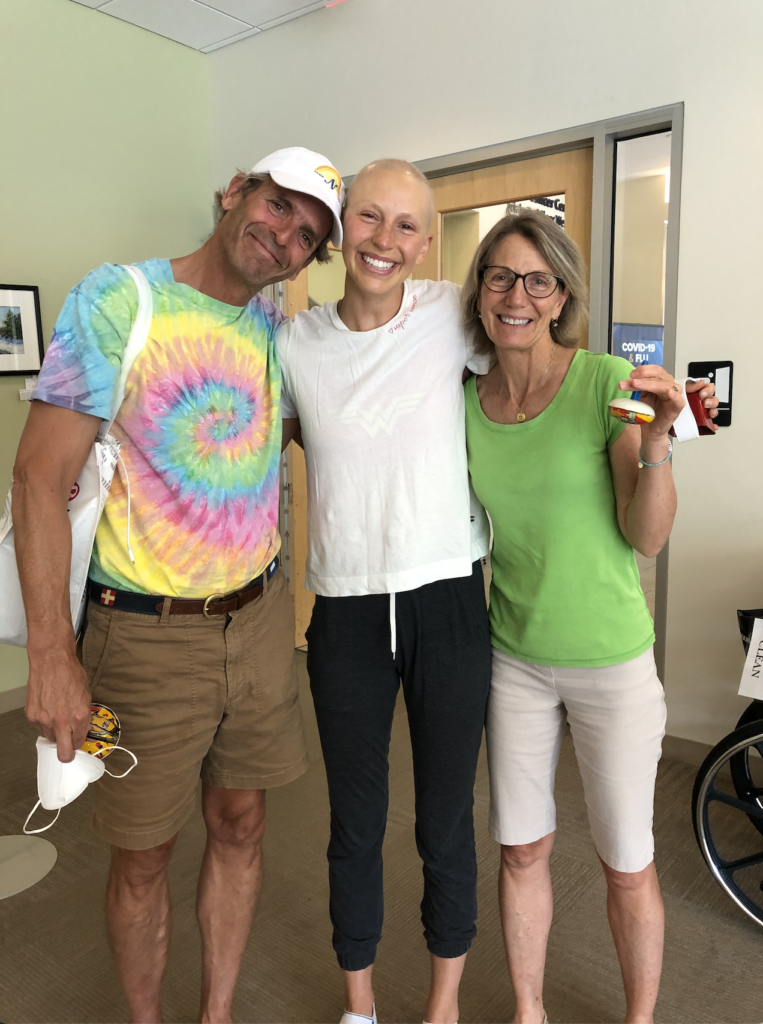
Mid- and post-treatment scans
Scanxiety is real. I would manifest my symptoms about 2 to 3 days before each of my scans. It would come up just to show me I still have cancer. It’s coming back. The results are going to be bad.
I would have night sweats because of my anxiety. I would have full-body aches. I would have chest pains. Everything I had experienced, I felt right before each of my scans.
But my midway scan was amazing. They showed huge progress, even though I was having those weird symptoms.
Similarly, at my end scan, I was like, “Well, it’s all back. I have every symptom,” and it wasn’t there.
It is so important to just let each step happen as it is and to really take into account that your body can do crazy things. There is hope even when you do not feel like there is.
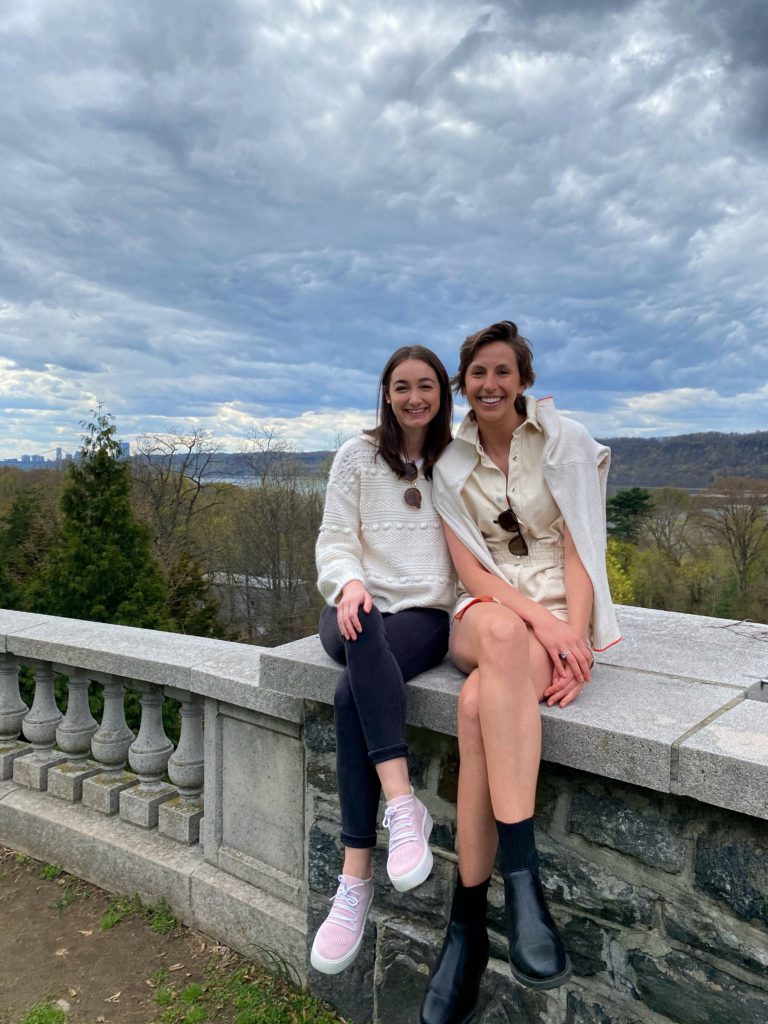
“In remission”
I got to see my friends for the first time after my treatment, and I gave myself a few weeks to recover and went out to Montauk to celebrate. I was in the most beautiful picturesque place. I was wearing a dress, and I was considering wearing a wig but thought, “No, I’m just going to own it and be bald.” I didn’t have eyebrows either.
I’ll never forget that time because I got to experience friendship on a physical level again for the first time in a while and what happiness really felt like.
A week after that, I learned with my family by my side that I was in remission, and my scan came back clear.
Just in a week’s span, my life went from feeling like it was over to the most positive feeling in the world.
Life After Cancer
Transition to survivorship
I have transitioned from a facade as easily as most people would think transitioning could look. After treatment, I moved back to the city. I started working again and even got promoted.
It felt as though everything was falling back into place. I was in remission. I had friends around me. I was in a big city, but my mental health was not there.
I struggled with it, but having a consistent routine and incorporating the things I learned during my treatment into my daily life helped me through this transition. Some of those things were following my meditation practice, movement, eating well, and making sure I connect with family and friends each day to give them the lowdown on how I was feeling.
Finding Your Cancer Community
Getting it out on social media
I started on TikTok right before I was diagnosed. As I got diagnosed, I continued and shared snippets of my cancer journey. That knowledge and video blogging had never happened before with cancer, and TikTok was a place for communities to see it and feel the same thing I was feeling.
By cancer community, I wouldn’t say all these people had any relationship to cancer, but I’m sure some of them do.
I was able to form a group of people who inspired me. Truly these strangers gave me hope and energy.
If I did one thing that benefited me, it was doing those series of videos on TikTok to express how I was doing.
At one point, I thought I wasn’t giving myself privacy. Every single step of my journey was shared. But those videos are the ones that resonated the most.
In terms of exposure, the biggest and what put me on the map was the day my dad shaved my head, which now has 2.5 million views. It was emotional, but it showcased the inspiration of that moment. Rather than the negative and more emotional side, it resonated with people to see that this isn’t the worst thing about the journey and that they will get through it.
For adolescent/young adult patients
For me, sharing was no problem, and I felt very open to it. But for others, that might not be the case.
As young adults, we rely a lot on the external validation of others, and without that part of your journey, it can feel very lonely.
I encourage people to find their resources pretty quickly and use them as a bench to lean on throughout the entire process.
It really comes down to what feels best for you and leaning on people to lift you, whether in a public or private setting.
Caregivers are just as much going through cancer as the patient themselves. In my case, my parents and my brother had to endure every ounce of pain that I was going through, and yet, they had to provide that caregiving support. They wanted to, and they did it exceptionally. It’s just as important to showcase the support for those individuals.
How people can support cancer patients
Through this time, we became closer than I thought ever possible. Trauma will either bring people together or pull them apart. I felt extremely fortunate that we came together and were able to get through this as a unit. They are truly the most incredible human beings I’ve ever met.
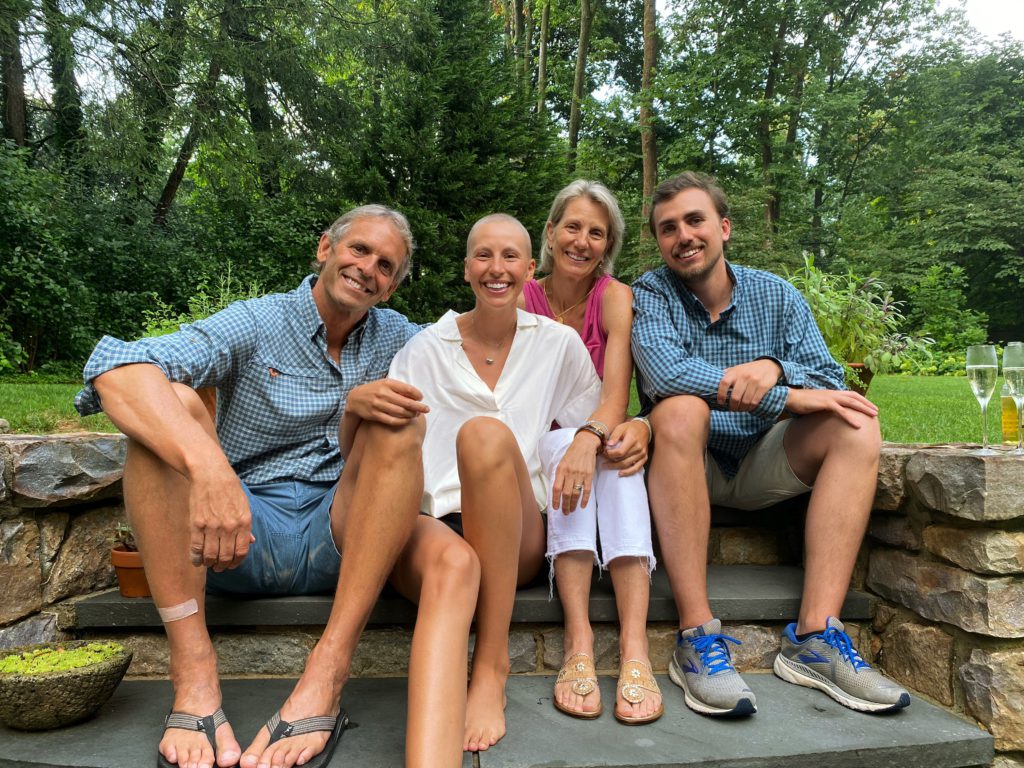
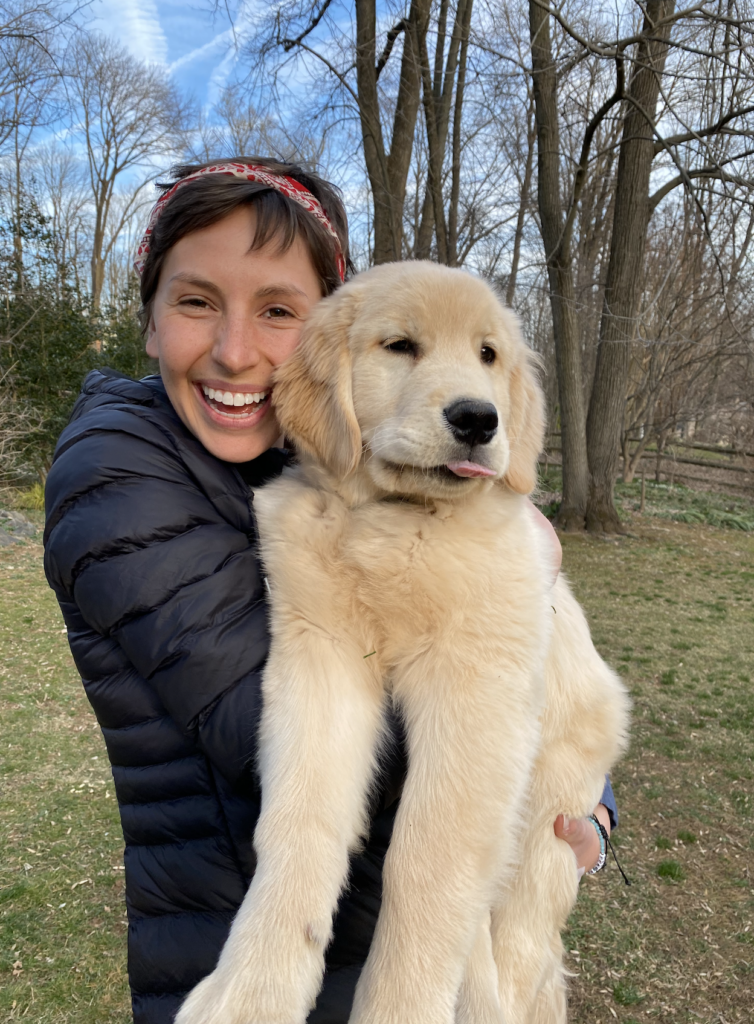
Being your own advocate
It comes down to trusting your gut. Without it, people are going to infer things. Always over-communicate, always advocate and say, “I know what’s best for myself,” even if that doesn’t mean you have an answer.
You are your own person — the only person that will go through this physically, and you have every right to share and provide yourself with every ounce of control. Your voice is your power.
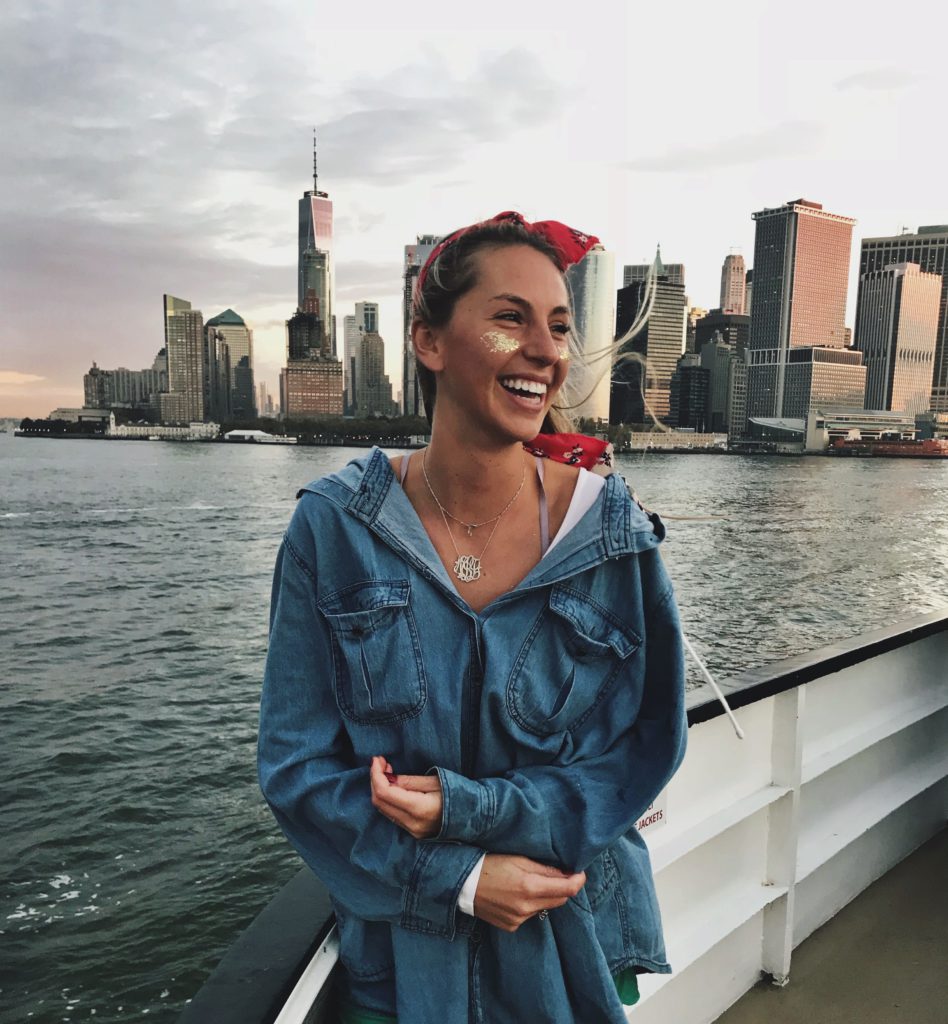
Inspired by Nina's story?
Share your story, too!
Other Diffuse Large B-Cell Lymphoma (DLCBL) Stories
Symptoms: Chest pain, back pain, bump on neck, night sweats Treatments: Chemotherapy, CAR T-cell therapy
Shahzad B., Refractory Diffuse Large B-Cell Lymphoma (DLBCL), Stage 4
Symptom: Extreme fatigue
Treatments: R&B, R-ICE, R-EPOCH, CAR T-cell therapy (cell-based gene therapy)
Paige C., Diffuse Large B-Cell Lymphoma (DLBCL), Stage 4
Symptoms: Weight loss, extreme fatigue, swollen lymph nodes in the neck
Treatment: R-EPOCH chemotherapy
Cindy M., Diffuse Large B-Cell Lymphoma (DLBCL), Stage 4
Symptoms: Itchy skin on the palms and soles of feet; yellow skin and eyes
Treatment: Chemotherapy (R-CHOP)
Nolan W., T-Cell/Histiocyte-Rich Large B-Cell Lymphoma (T/HRBCL), Stage 4
Symptoms: Debilitating fatigue, flu-like symptoms without a fever, swollen lymph node under the left arm
Treatments: Chemotherapy (R-EPOCH & RICE), bone marrow transplant
Tony W., Relapsed T-Cell/Histiocyte-Rich Large B-Cell Lymphoma (T/HRBCL)
Symptoms: A lot of effort needed cycling, body wasn’t responding the same; leg swelling
Treatments: R-CHOP chemotherapy, CAR T-cell therapy
